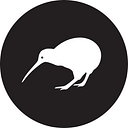HMNZS Matataua get the job done during RIMPAC
New Zealand’s “get the job done” attitude earned HMNZS Matataua a command role in the Mine Countermeasures phase of Exercise RIMPAC in San Diego.
Matataua’s clearance divers and hydrographers were the leads in a multi-nation force charged with clearing San Diego’s sea lanes and harbour entrance of mines, in preparation for an amphibious force landing.
“We’ve had a really exciting time here,” says Lieutenant Commander Ben Martin, Officer in Charge of around 40 personnel from Matataua. “In the first week, we cleared all the boat lanes and approaches, covering around 100 linear kilometres. Last week, we shifted to the approaches to San Diego harbour, using our REMUS 100 Autonomous Underwater Vehicle (UAV) to hunt for mines. Once found we’d send our divers down. That was a lot of work, over 16 to 18-hour days.”
As well as the Matataua personnel, LTCDR Martin commanded teams from Japan, Netherlands and a Marine Mammal Dolphins team from the US Navy. “The cool thing about this mission was having all the right tools for this type of environment. Dolphins can detect buried objects under water. The REMUS, with a high coverage rate, can locate mines. Then we used three teams of clearance divers to neutralise mines via explosive means.”
At time of writing, the combined team had just declared the harbour ‘cleared’ for shipping. “We’re now shifting into that phase of internal training, lessons learnt and reconstitution before returning to New Zealand.”
Highlights have included a “pouncer” operation, where divers deploy out the rear of a slow-moving helicopter — in this instance a MH-53E Sea Dragon from a US Navy Helicopter Mine Countermeasures Squadron. It is a method to get clearance divers close to floating and drifting mines, dealing to them as quickly as possible. “The maritime assets the US Navy have got access to are some of the world’s best,” says LTCDR Martin. “The Sea Dragon is probably one of the bigger utility aircraft in their fleet. It’s impressively large and loud, carrying about 40 people. In its Aerial Mine Counter Measures Role it tows sonars and hunts for mines. It’s a great asset.” The standard procedure is the helicopter is 10 feet high, travelling about 10 knots. “It depends on the pilots. We want it to be as low as possible, because reduces the chances of things going wrong for the diver.”
Exciting as it was, it is a technique Matataua is well-trained for. “We do it annually, sometimes twice a year. Our Air Force can’t conduct heli-casting at the moment, or pouncer operations until complete operational release of the NH90. So we use the Northern Emergency Services helicopter, out of Whangarei, or we train with the US Navy or Australia.”
A Kiwi attitude to adaptability would be obvious to any visitor to their setup at Naval Base Port Loma. “What’s been really cool has been the sustainment side of this mission. We brought over four full 20-foot shipping containers. We’ve set up this headquarters in a carpark, with tents — it’s pretty austere. Our two chefs have been getting up at 4am, serving 45 meals per sitting for the last four weeks.” Sustainment of the force is a key mission objective, and one that the team has really focussed on. Strategy 25 Integrated Defence Force goals are also being achieved. “We have also deployed, for the first time, a NZDF-secure communication suite, meaning we can log in securely and send data. It’s really pushing our network integration capabilities of Command and Control.”
LTCDR Martin says Matataua’s tactical teams are highly trained and among the best in the world, although everyone is professional across nations. “Keep in mind the mine warfare community is so small. In a time of crisis, we would all be used, and it’s the strength of the whole that does it. New Zealand might not have the flash kit, but we bring to the party a mission focus and a keenness to get the job done.”
Statistics
Over 100 dives
Discovered 50 mines
Working 16 to 18 hours a day
Clearing 12 square nautical miles of water
